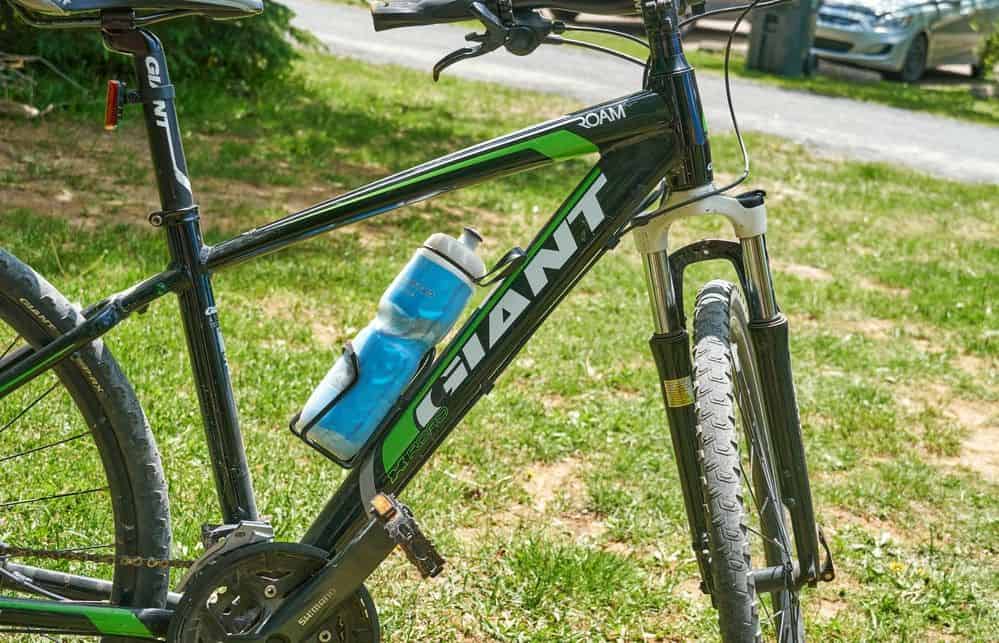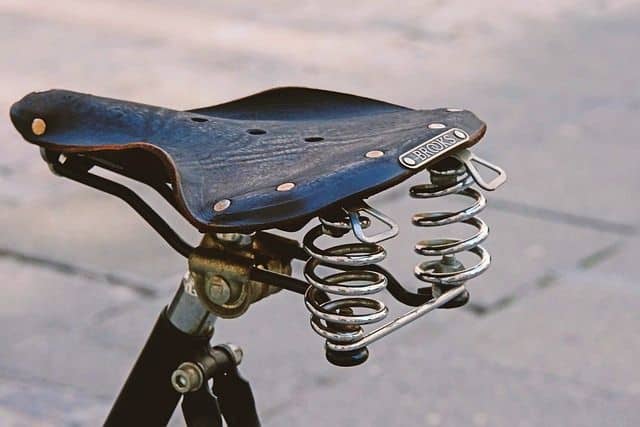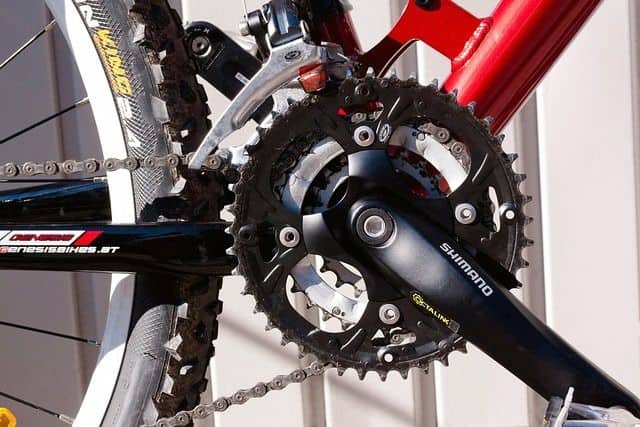If you’re a heavier rider, it’s important to think about more than just weight-bearing capacity when selecting your hybrid bike. Everything from the type of wheel, brake system, gears, frame material, and frame geometry can all make a difference in your cycling experience! Women riders may find women-specific bikes to be a more comfortable fit.
Cyclists who are heavier might forego the benefits of cycling because they are unable to find a suitable bike. Most often, heavy riders don’t know what to look for in a bike and what factors make it a good option.

Having knowledge about all aspects of a hybrid bike will ensure you make the most suitable choice, as there are currently many cycling brands in the market.
This guide provides information on choosing a hybrid bike suitable for a heavy rider, including assessing if hybrid bikes are appropriate and what considerations should be made when investing in one.
Is a Hybrid Bike Suitable for a Heavy Rider?
Hybrid bike presents a range of benefits for heavier riders. This bike combines features from mountain and road bikes, providing comfort and an increased weight-bearing capacity.
Here are some of the key benefits that hybrid bike bring to heavier cyclists:
● Durability: Many bikes, especially with heavier riders, can give out in the long run due to the continuous stress placed on the many components of the bike (unless the bike is built with a high weight capacity).
A hybrid bike can support heavy loads and take you through (mild) off-roading and, therefore, are more durable than several other bike types in the market. They’re more robust and they don’t require too much maintenance to keep them in such stellar shape.
You can ride your bike without worrying about its capacity or strength.
● More Control and Grip: Hybrid bikes typically feature wide tires. These afford better control over the bike due to the superior grip that such tires provide, regardless of the kind of terrain you’re on.
● Ease into Your Fitness Journey: Hybrid bike is an excellent first step to take on your fitness journey. This bike isn’t as tough or extremely easy to ride as a mountain bike, so riding is kept easy, challenging, and fun simultaneously!
They’re also extremely comfortable, which means that they’re more likely to be used frequently on both roads and gravel.
Think about it—would you more frequently wear that comfy pair of slacks or those jeans that dig into all the wrong places? Bikes are the same; the more comfortable the bike, the more often you’ll use it, increasing your fitness and strength levels.
● Lesser Fatigue and Injuries: This points back to the comfort levels that hybrid bikes afford.
Meant to be ridden upright, hybrid bikes reduce the stress you feel on your hands, arms, neck, and back. The reduced pressure on these parts reduces the stress on your respiratory system, letting you ride for longer and, more importantly, enjoy the ride.
This can make a huge difference, considering that you’re already feeling stress on your joints and possibly some body pain. All of this can also lead to reduced injuries.
The upright position also lets you better maneuverability over the bike.
What Type of Hybrid Bike Is Right for a Bigger, Heavy Rider?
Your hybrid bike allows you three main movement possibilities:
● Commuting in the City: Using your bike within city limits, such as running errands, commuting to work, or getting from point A to B. Commuting in the city involves encountering that dreaded bane of civilization—traffic.

● Working Out: You can use your hybrid bike for a workout, which means riding the bike on designated cycle paths in parks or around the city, on smooth streets, or paved paths.
● Cruising: Your hybrid bike allows you to explore relatively tame off-road terrain, which means that you could be riding your bike on rough roads, gravel, uneven paths, or paved ways.
Depending on the use of your bike, you can pick from a cross, trekking, city, commuter, and comfort bike.
Here’s the lowdown on each:
● Cross Bikes: Cross bikes are all-rounders, typically slimmer than the average hybrid bike. This slimness allows the bike to be used in competitive sporting events on both mildly rough and completely paved surfaces.
The lightweight frame, tires, and reinforced brakes further enhance the bike’s suitability for such events.

● Trekking Bikes: As the name suggests, these are bikes used for trekking. They’re not as “heavy duty” as mountain bikes and are mainly meant for paved surfaces.
Because they encounter their fair share of natural conditions and heavy loads, these bikes are usually outfitted with mudguards, comfortable seats, a pannier rack, and lights.
● City Bikes: City bike is meant for short-distance rides in urban settings. Though the style of these bikes shares many similarities with that of mountain bikes, city bikes prioritize comfort, ease of use, and being visible in traffic, especially at night (done through reflective logos, decals, surfaces, and lights).
These bikes don’t usually feature active suspension but may come with fenders to protect the bike and the rider in wet weather.
● Commuter Bikes: A strong frame that allows mounting additional baskets, a carrier rack, and full fenders make a commuter bike ideal for long-distance travel.
● Comfort Bikes: These are built for comfort, as indicated by the name, but they’re good for short trips. These bikes usually don’t have advanced features such as seat suspension or active suspension and work best for visiting destinations close by.

What Bike Components Should Heavy Riders Pay Attention To?
As you’re probably already aware, hybrid bikes combine the features of road and off-road (mountain) bikes so that you can use them for both off-road and on-road commutes. The chief distinguishing factor of these bikes is the upright riding position, followed by flat handlebars, wide wheels, and the presence of a suspension fork.
In addition to the bike’s weight limit, heavy riders must pay attention to certain features such as the wheels, frame, brake type, saddle, and gears. Here’s what to look out for when it comes to these components.
Wheels
Heavier riders may face the constant, demotivating issue of popped spokes and punctures, which is why sturdy wheels, with at least 36 spokes and puncture-proof tires, are a must.

Typically, hybrid bikes come with two standard wheel sizes—700C and 26-inch wheels.
The former is the standard wheel size that you’ll find on most hybrids. These are larger than 26-inch wheels and provide better control, grip, and stability on rough terrain than the latter, especially for heavier riders.
However, instead of worrying about the wheel size, we recommend that you figure out what you’re going to be primarily using your hybrid bike for (commuting, fitness, off-roading, leisure riding, etc.) and pick a wheel type that best suits this.
For example, 700Cs are excellent all-rounders and very sturdy but heavy, so it takes longer and more effort to get them rolling than their 26-inch cousins.
If your chosen wheels aren’t serving you well, you can consider getting custom sturdy wheels built for your ride; many heavier riders find this to be the solution to any wheel issues they face.
Bike Frame
Your bike frame should be sturdy and support your weight for the first few rides but in the long run. It should also be comfortable enough to ride for long periods. Two factors must be considered to ensure a sturdy frame: the bike frame material and its geometry.

Frame Material
Hybrid bikes may have steel, aluminum, or carbon fiber frames.
The most common are aluminum, and most hybrid bikes will feature this frame material. However, though aluminum is stiff, strong, lightweight, and extremely affordable, it’s lacking in the shock absorption department, which is why riders may opt for carbon fiber or steel frame.
Carbon fiber is stronger than steel and lighter than aluminum, but it’s pretty expensive and doesn’t make much sense if the bike itself isn’t high-end.
Instead of a frame that’s entirely carbon fiber, some models may have seat posts and forks made of the material so that the bike isn’t as expensive and riders can still enjoy some of the benefits of carbon fiber.
Steel is the least popular option because it’s quite heavy—the added weight involves more effort to move. However, the amount of flex and the strength offered by this material give riders a smooth and comfortable ride.
Considering all this, aluminum is the best option for heavy riders, as they offer the best balance between strength and the weight-to-stiffness ratio.
Frame Geometry
When looking at the frame geometry, you may hit with technical terms such as the wheelbase, stack, rake, head tube angle, reach, bottom bracket drop, and trail.
You should know that bikes come with different frame shapes, affecting how fast they go. Knowing the details will help you better choose what bike to ride. But most important is understanding that bikes with different frame shapes perform differently.
For example, race (road) bike frames are designed to have the rider sitting low and leaning forward, which reduces wind resistance and increases traction. However, the downside is that this position can tire you out quickly on long-distance rides.
For beginner/amateur heavy cyclists, looking at the stack (height of the frame) and reach (how far your legs stretch) are sufficient. You want to have at least a couple of inches between your groin area and the top tube and be able to maintain slightly bent knees when the pedal is pushed to its lowest.
Saddle
First, all saddles will cause sores for at least the first two weeks of continuous riding.

You can reduce the intensity of these sores with a sufficiently wide saddle (sit bone width), with the help of a chamois (padded underclothes worn under your cycling clothes), and cushioned/padded seats.
Beware, though, that most times, padded seats are counterproductive. To achieve the padded effect, lots of material is used, which can bunch up and cause chafing.
Brake Type
Hybrid bikes (and most bicycles) feature two types of brakes—rim or disc brakes.
Rim brakes feature pads gripping onto the wheel rims to stop the bike. These brakes are easy to monitor and replace and are also inexpensive. However, the stopping power is less, especially in muddy or wet conditions; you’ll need to put in quite a bit of finger effort to brake sufficiently. Most hybrid bikes feature rim brakes.
Disc brakes can be mechanical or hydraulic. Both involve brake pads that grip a wheel-hub-mounted brake rotor.
The mechanical disc brakes needs to be manually adjusted as the pads wear, while the hydraulic disc brakes self-adjusts in the case of wear. It also offers stronger braking with lesser finger effort. You can read more about the differences between hydraulic and mechanical disc brakes here.
Disc brakes perform more consistently, even in wet and slippery terrain, require lesser effort, and are cheap to replace. However, hydraulic disc brakes can be quite expensive, and monitoring the wear and tear of the pads can be challenging.
A mechanical disc brake system is recommended for heavier riders as it is strong enough and easier to maintain.
Gears
Gears are the most complicated part of a hybrid bike for most riders since they come in a broad range and are affected by multiple components such as cogs, chainings, the number of teeth, etc.

When it comes down to it, though, all you need to consider is how fit you are and what kind of terrain you’ll be riding on most often. For challenging terrains such as slopes and hills, more gears are helpful. For smooth/flat terrain, a lower number of gears will do unless you have the required strength (more gears will help keep your bike light).
Hybrid Bikes for Women: Should Women Consider Different Bikes than Men?
Women are naturally built with narrower shoulders and a higher leg-to-torso ratio than men. Because of this, some bikes may fit women differently than men.

Women-specific bikes have narrower handlebars to accommodate narrow shoulders and a more compact frame for better control. However, several women riders may find that even men-specific or unisex bikes fit them well, so there’s no compulsion that women need to stick to women-specific bikes.
The Final Word
The right hybrid bike can be a blessing, turning something traditionally deemed taxing (we’re talking about exercise!) into something super fun. Few things are better than the wind in your hair, and that feeling of accomplishment and pride as your cycling prowess grows.
As a heavier rider, investing in a hybrid bike could be a good option. It is important to consider the differences between hybrid bikes for heavy riders in order to find one that suits your needs and preferences.